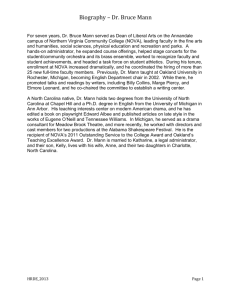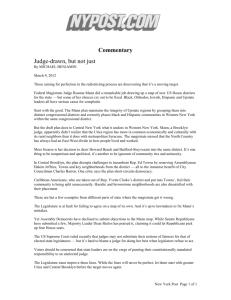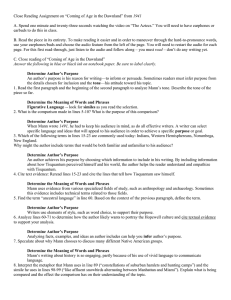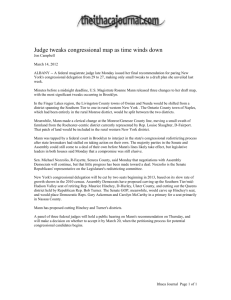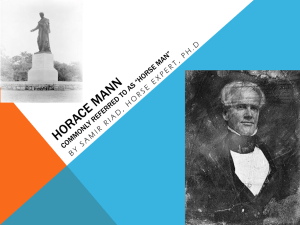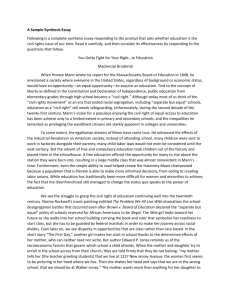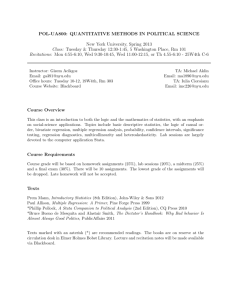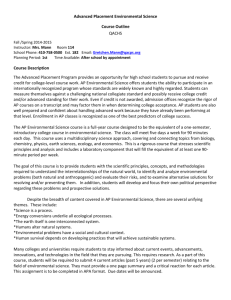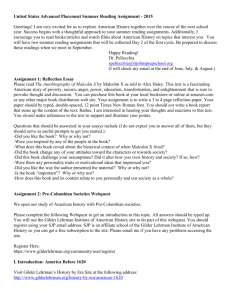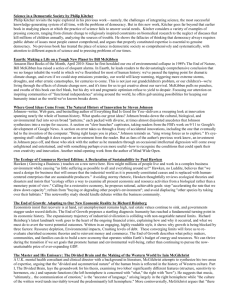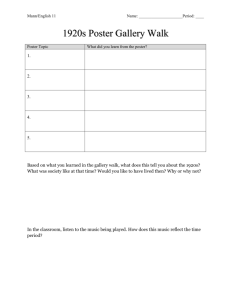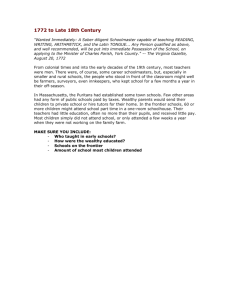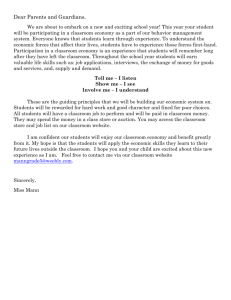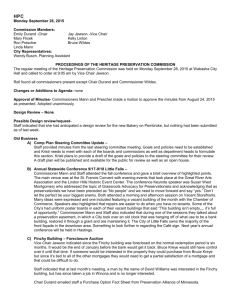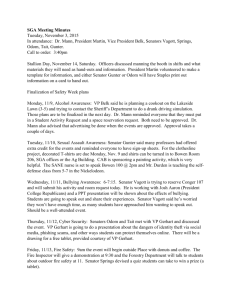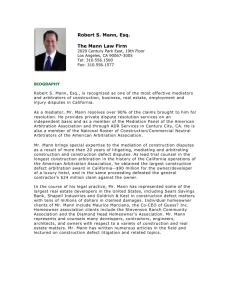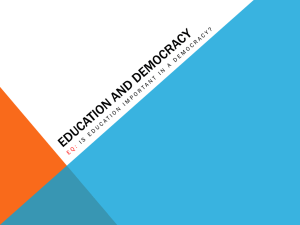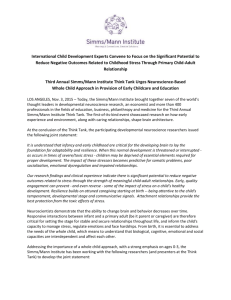Guided Questions "Coming of Age in the Dawnland"
advertisement
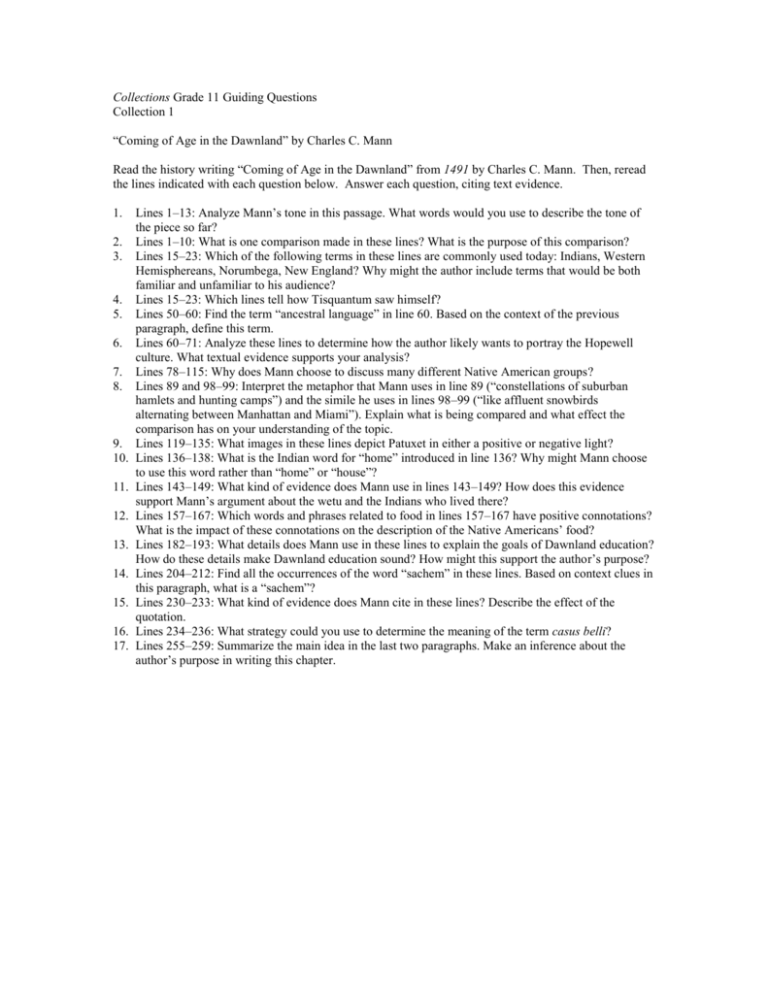
Collections Grade 11 Guiding Questions Collection 1 “Coming of Age in the Dawnland” by Charles C. Mann Read the history writing “Coming of Age in the Dawnland” from 1491 by Charles C. Mann. Then, reread the lines indicated with each question below. Answer each question, citing text evidence. 1. 2. 3. 4. 5. 6. 7. 8. 9. 10. 11. 12. 13. 14. 15. 16. 17. Lines 1–13: Analyze Mann’s tone in this passage. What words would you use to describe the tone of the piece so far? Lines 1–10: What is one comparison made in these lines? What is the purpose of this comparison? Lines 15–23: Which of the following terms in these lines are commonly used today: Indians, Western Hemisphereans, Norumbega, New England? Why might the author include terms that would be both familiar and unfamiliar to his audience? Lines 15–23: Which lines tell how Tisquantum saw himself? Lines 50–60: Find the term “ancestral language” in line 60. Based on the context of the previous paragraph, define this term. Lines 60–71: Analyze these lines to determine how the author likely wants to portray the Hopewell culture. What textual evidence supports your analysis? Lines 78–115: Why does Mann choose to discuss many different Native American groups? Lines 89 and 98–99: Interpret the metaphor that Mann uses in line 89 (“constellations of suburban hamlets and hunting camps”) and the simile he uses in lines 98–99 (“like affluent snowbirds alternating between Manhattan and Miami”). Explain what is being compared and what effect the comparison has on your understanding of the topic. Lines 119–135: What images in these lines depict Patuxet in either a positive or negative light? Lines 136–138: What is the Indian word for “home” introduced in line 136? Why might Mann choose to use this word rather than “home” or “house”? Lines 143–149: What kind of evidence does Mann use in lines 143–149? How does this evidence support Mann’s argument about the wetu and the Indians who lived there? Lines 157–167: Which words and phrases related to food in lines 157–167 have positive connotations? What is the impact of these connotations on the description of the Native Americans’ food? Lines 182–193: What details does Mann use in these lines to explain the goals of Dawnland education? How do these details make Dawnland education sound? How might this support the author’s purpose? Lines 204–212: Find all the occurrences of the word “sachem” in these lines. Based on context clues in this paragraph, what is a “sachem”? Lines 230–233: What kind of evidence does Mann cite in these lines? Describe the effect of the quotation. Lines 234–236: What strategy could you use to determine the meaning of the term casus belli? Lines 255–259: Summarize the main idea in the last two paragraphs. Make an inference about the author’s purpose in writing this chapter.
